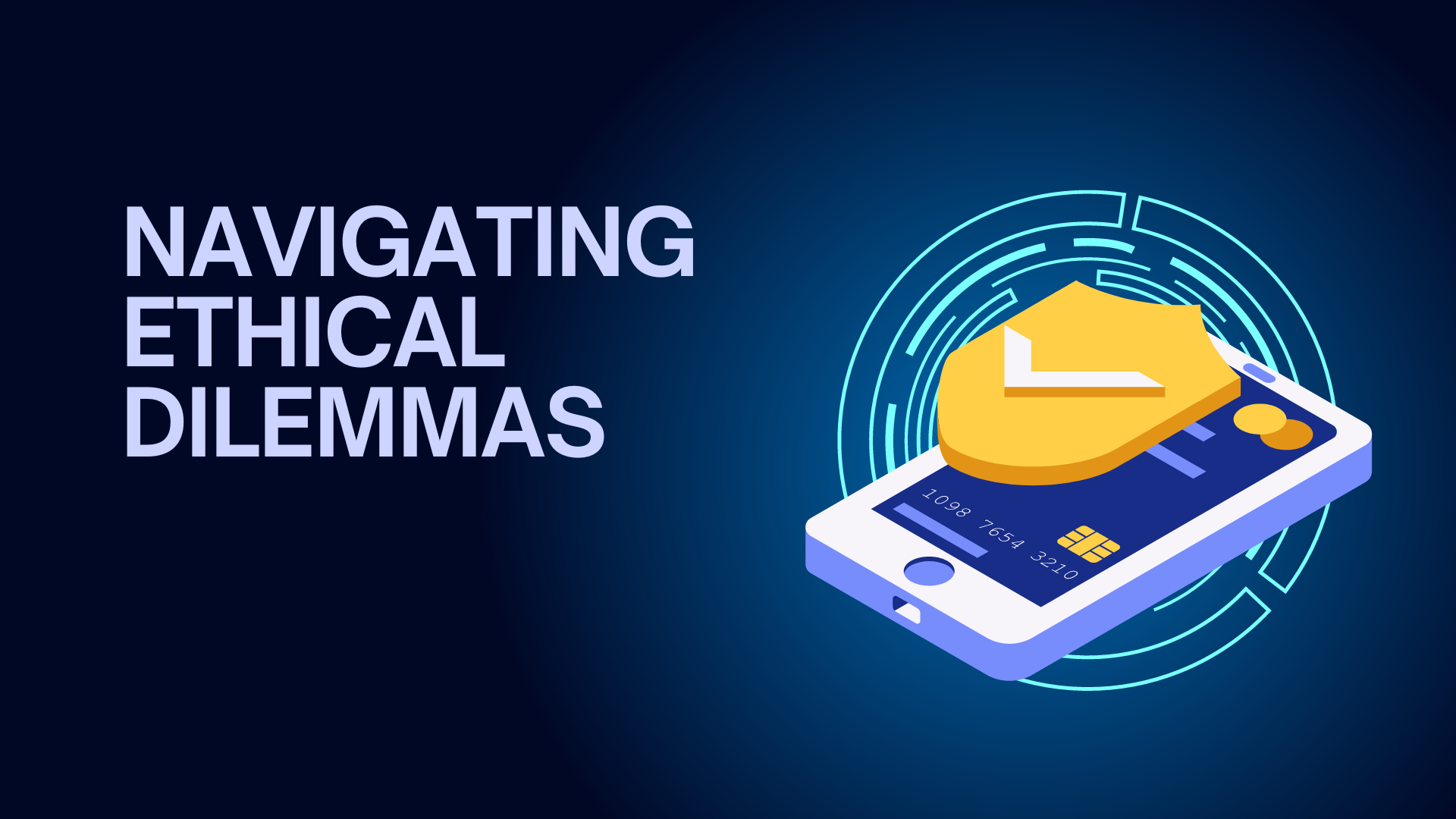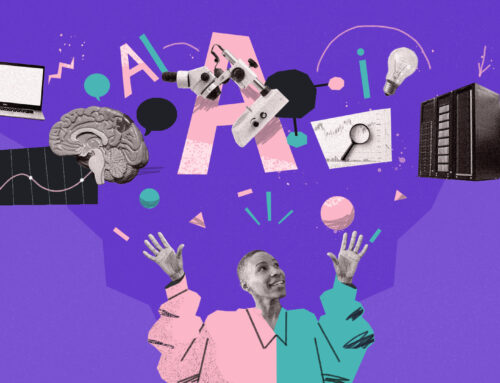Artificial Intelligence (AI) text generators are becoming increasingly popular for creating content. These AI and machine learning tools can save time and effort, but they also bring up important questions about security and privacy. Let’s look into the security risks of AI text generators, how to protect user data, and the measures in place to prevent misuse of these AI tools.

What are the Security Risks Of AI Text Generators?
AI text generators can pose several security risks. These risks can include unauthorized access to user data, data breaches, and misuse of generated content.
Tooba, a content writer, points out,
“While conducting product research for my client, I’ve identified several security risks associated with AI text generators:
1. Without input and output validators, AI text generators can leak sensitive input data.
2. If there’s bias in the training data, AI text generators can perpetuate this bias through their content.
3. Malicious users can bypass AI text generator filters to produce biased or misleading outputs.”
Kevin Shahnazar, founder and CEO of FinlyWealth, explains, “Security risks associated with AI text generators include:
- Data breaches: User inputs may contain sensitive information that could be compromised if the AI platform’s security is breached.
- Model poisoning: Malicious actors could manipulate the AI model to produce biased or harmful content.
- Intellectual property theft: There’s a risk of extracting proprietary information from the model or training data.”
Daniel Bunn, Managing Director of Innovateviews, adds, “Security Risks Associated with AI Text Generators: AI text generators pose risks such as data breaches, where sensitive information used in training models might be exposed. They can also be exploited to create phishing emails, spread misinformation, and generate malicious scripts, leading to significant security threats. Additionally, models trained on biased data can perpetuate discrimination and unethical outputs.”
Darryl Stevens, CEO of Digitech Web Design, emphasizes, “Security Risks Associated with AI Text Generators: AI text generators pose several security risks, including data breaches, unauthorized access, and malicious use of generated content. These tools can inadvertently produce sensitive or confidential information, leading to privacy concerns. Moreover, there’s a risk of adversaries using AI to generate misleading or harmful content.”
How Can We Protect User Data When Using AI Text Generators?
Protecting user data is a top priority when using AI text generators. Here are some steps to ensure security risks of AI text generators:
- Data Encryption: Encrypting data both in transit and at rest can help protect it from unauthorized access.
- Access Controls: Limiting access to the data to only those who need it can reduce the risk of unauthorized access. Incorporating VPN security helps restrict access to AI-generated data by masking IP addresses and securing remote connections.
- Regular Audits: Conducting regular security audits and log monitoring can help identify and fix vulnerabilities.
- User Consent: Ensuring that users are aware of how their data will be used and obtaining their consent is essential.
- Secure APIs: Using secure APIs to integrate AI text generators with other systems can prevent data leaks.
Tooba shares, “To protect user data, several measures can be implemented:
1. Input/ output validators
2. Data anonymization
3. Encryption
4. Authorized access control
These measures help prevent the spread of sensitive information and ensure that the input text meets quality standards.”
Kevin Shahnazar adds, “To protect user data when using AI text generators:
- Implement robust encryption for data in transit and at rest.
- Use tokenization to replace sensitive data with non-sensitive equivalents.
- Regularly audit and update access controls to ensure data is only accessible to authorized personnel.”
Daniel Bunn suggests, “Protecting User Data When Using AI Text Generators: To protect user data, anonymize datasets by removing personal identifiers and use robust encryption for data storage. Implement strict access controls to ensure only authorized personnel can access the data. Regular security audits and monitoring are crucial for detecting and responding to unauthorized access or data breaches promptly.”
Darryl Stevens advises, “Protecting User Data: To protect user data when using AI text generators, it’s crucial to implement robust encryption protocols and access controls. Ensure that data is encrypted both in transit and at rest. Additionally, using anonymization techniques can help minimize the exposure of sensitive information. Regular security audits and compliance with data protection regulations like GDPR and CCPA are essential to maintain data privacy.”
What Measures Are in Place to Prevent Misuse of AI Text Generators?
Preventing the misuse of AI text generators involves implementing policies and technologies to ensure responsible use.
- Content Moderation: Using content moderation tools to filter out inappropriate or harmful content.
- User Verification: Verifying the identity of users to prevent misuse by anonymous or fake accounts.
- Usage Monitoring: Monitoring the usage of AI text generators to detect and prevent misuse.
- Ethical Guidelines: Establishing and enforcing ethical guidelines for the use of AI text generators.
- Legal Compliance: Ensuring that the use of AI text generators complies with relevant laws and regulations.
Tooba remarks, “AI hallucination detectors are the lastest robust technology to prevent security risks in AI text generators. These tools compare AI-generated text with training data and references, creating an audit report that guides developers on the system’s strengths and weaknesses. Developers can then take corrective actions based on the report’s recommendations.”
Kevin Shahnazar states, “Measures to prevent misuse of AI text generators include:
- Content filtering systems to flag potentially harmful or inappropriate outputs.
- User authentication and activity logging to track and prevent misuse.
- Rate limiting to prevent automated abuse of the system.
In our experience, a multi-layered approach combining technical safeguards with clear usage policies is most effective in mitigating risks associated with AI text generators.”
Daniel Bunn comments, “Measures to Prevent Misuse of AI Text Generators: Develop and enforce ethical guidelines that define acceptable use cases and prohibit malicious activities. Implement content moderation systems, combining automated tools and human oversight, to filter harmful outputs. Restrict access to authenticated users with tiered access levels and ensure transparency in AI usage, providing clear information on data use and safeguards.”
Darryl Stevens highlights, “Preventing Misuse of AI Text Generators: To prevent misuse, AI text generators should have built-in safeguards such as web content filtering and monitoring systems that detect and block inappropriate or harmful content. Implementing user authentication and access management can restrict the use of these tools to authorized individuals only. Furthermore, continuous monitoring and updating of AI models can help identify and mitigate new threats, ensuring that the technology is used responsibly.”
Understanding the Security Risks of Generative AI
The dawn of AI has brought a mix of excitement and worry. While AI can do amazing things, it also has its drawbacks. For instance, chatGPT and other AI text generators are powerful tools, but they come with their own security concerns. When we use generative AI models, we need to be aware of the risks of AI, especially related to data security. Generative artificial intelligence can sometimes create synthetic data that might not be secure.
The security risks of AI text generators include data leakage and unauthorized use of data. When using AI applications like text generators, there is always a chance that the data used might be exposed to unwanted parties. This is why it’s important to have strong security measures in place to mitigate risks. The security risks of AI text generators can be significant if not properly managed, and this includes concerns over the data used in creating AI outputs.
Using generative models can be tricky. While they are useful, we must consider the security risks of AI text generators. It’s important to understand that AI cannot fully protect against all threats. The use of generative AI should be carefully monitored, and steps should be taken to reduce any potential security risks. By being aware of these issues, we can make better decisions and use AI more safely.
Malicious AI-Generated Content: A Growing Security Concern
The dark side of creativity in AI is a serious concern, especially when it comes to malicious AI-generated content. Generative AI can be used to create misleading or harmful information that can evade detection and cause security threats. Large language models, which power these AI solutions, sometimes produce generated data that includes confidential data without realizing it. This poses significant privacy and security risks that need immediate attention.
Here are a few key points to consider:
- Generative AI applications can sometimes misuse confidential data, leading to serious privacy breaches.
- The use of AI algorithms in generating content requires a strong layer of security to prevent misuse.
- AI development must prioritize security to address the threats posed by malicious generated content.
The security risks of AI text generators are vast. AI may inadvertently expose sensitive information, making it crucial to implement new security measures. Generative AI applications must be closely monitored to mitigate the security risks associated with their use. By focusing on robust security solutions, we can protect against the potential dangers of AI-generated content and ensure the safe use of AI technology.
How to Prevent Data Breaches in AI Companies
Data breaches are the ultimate nightmare for AI companies, especially as generative AI has become more widespread. The risks associated with using generative AI models are significant because the data in generative AI systems can include sensitive and confidential information. AI models are trained on vast amounts of text and code, making them vulnerable to potential security breaches if not properly protected.
Here are a few points to consider:
- Generative AI models often handle large amounts of data, increasing privacy risks.
- The use of generative AI within companies requires strong security protocols to safeguard information.
- Ethical and security challenges need to be addressed to ensure the safe deployment of AI programs.
The impact of generative AI on security systems cannot be underestimated. AI can also inadvertently expose data, which means AI research and development must include robust security measures. Security researchers are constantly working to understand and mitigate these risks, but AI techniques must evolve to stay ahead of potential threats. New AI security systems should be designed to protect against breaches and ensure that AI use remains safe and ethical.

The ethical dilemma of AI as a tool for good or evil is a pressing issue. Generative AI offers many benefits, but it also raises security concerns that cannot be ignored. AI and cybersecurity are closely linked, and while AI can help improve security, it also poses new threats. Security teams must stay vigilant as AI creates both opportunities and challenges.
Several security professionals believe that AI could revolutionize security tools, making it easier to detect and prevent breaches. However, AI developers need to focus on ethical AI development to ensure that AI helps rather than harms. Training AI models with security in mind is crucial to mitigate risks associated with AI threats.
AI poses unique challenges that require innovative solutions. Many AI applications can enhance overall security, but only if they are developed and used responsibly. AI helps to identify potential security issues, but it can also be exploited if not properly managed. Security professionals must work together with AI developers to create systems that protect against these new threats, ensuring a balance between leveraging AI’s potential and safeguarding against its risks.


